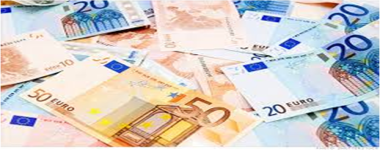The ECB discusses money in its paper “Enhancing monetary analysis”. Chapter 1 is titled “The role of money in the economy and central bank policy“. It was prepared by Giacomo Carboni, Boris Hofmann and Fabrizio Zampolli. The ECB distinguishes inside and outside money.

Banknotes and coins – or in short, currency – are normally the most secure form of money. They are issued by the central bank and/or government, which vouches for their general acceptability and the stability of their purchasing power. Equally safe are the deposits held at the central bank, normally available only to banks. Banks use them both as a means to settle payments among themselves and as a reserve to meet unusual demands for withdrawals of currency by their depositors. Along with the currency in circulation, the deposits held at the central bank constitute the so-called “monetary base”, “central bank money” or “outside money”.5Â This money is usually “legal tender”, which means that any potential creditor is obliged by law to accept it in settlement of any debt.6
5Â It is known as “outside” money to highlight the fact that it is created by the public sector as opposed to the private sector (and could be in principle controlled more easily) or as “high-powered” money to stress the fact that it constitutes the basis of the entire monetary pyramid whereby banks – by operating a fractional reserve system – create a volume of media of exchange that is a multiple of the money created by the central bank.
6Â Importantly, the exact definition of “legal tender” may differ from country to country.
The second paragraph (separated by lines) are the footnotes of the first. A different term for central bank money would be reserves. The paragraph on legal tender is somewhat interesting. Footnote 6 says it may differ from country to country. Nevertheless, tax payments ultimately are made in reserves (or what the ECB calls central bank money). Sadly, the ECB does not mention this and completely erases the fiscal part from the whole story. That probably has created the blind spot which led to the creation of a euro zone in which sovereign bonds were not risk free. The ECB continues then describes endogenous money (my highlighting):

